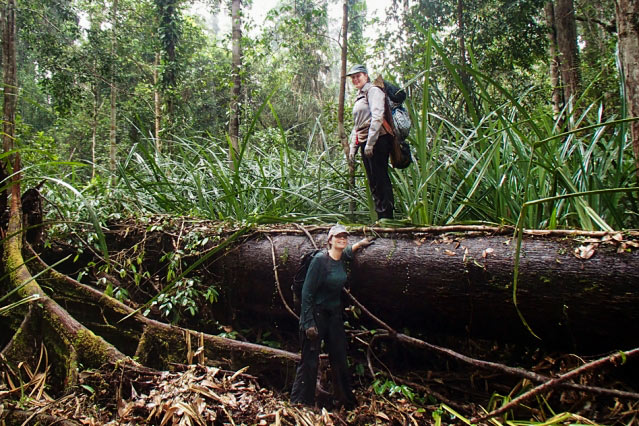Peat’s Sake
A team led by Charles Harvey, an MIT professor of civil and environmental engineering, and Alison Hoyt, PhD ’17, a postdoc at the Max Planck Institute for Biogeochemistry, has used precise satellite elevation data gathered from 2007 to 2011 to document the environmentally dangerous effects of peatland drainage in Southeast Asia.
Tropical peatlands are permanently flooded forests where fallen leaves and branches accumulate for centuries rather than decomposing. In less than three decades, most of Southeast Asia’s peatlands have been deforested, drained, and dried for agriculture or other purposes, leaving them vulnerable to wildfires that spew pollution and greenhouse gases. Even when unburned, dried peat rapidly decomposes, releasing carbon and causing the ground surface to subside, or sink, toward sea level faster than sea level is rising.

Until now, measuring these effects has required arduous treks through trackless swamps. But thanks to interferometric synthetic aperture radar (InSAR), which can detect changes in surface elevation with an accuracy of millimeters, the team determined that over 90% of the peatland studied was subsiding at an average of almost an inch a year.
“This is definitely a proof of concept on how satellite data can help us understand environmental changes,” Hoyt says. “This has really exciting management implications.”
Keep Reading
Most Popular
Large language models can do jaw-dropping things. But nobody knows exactly why.
And that's a problem. Figuring it out is one of the biggest scientific puzzles of our time and a crucial step towards controlling more powerful future models.
The problem with plug-in hybrids? Their drivers.
Plug-in hybrids are often sold as a transition to EVs, but new data from Europe shows we’re still underestimating the emissions they produce.
Google DeepMind’s new generative model makes Super Mario–like games from scratch
Genie learns how to control games by watching hours and hours of video. It could help train next-gen robots too.
How scientists traced a mysterious covid case back to six toilets
When wastewater surveillance turns into a hunt for a single infected individual, the ethics get tricky.
Stay connected
Get the latest updates from
MIT Technology Review
Discover special offers, top stories, upcoming events, and more.